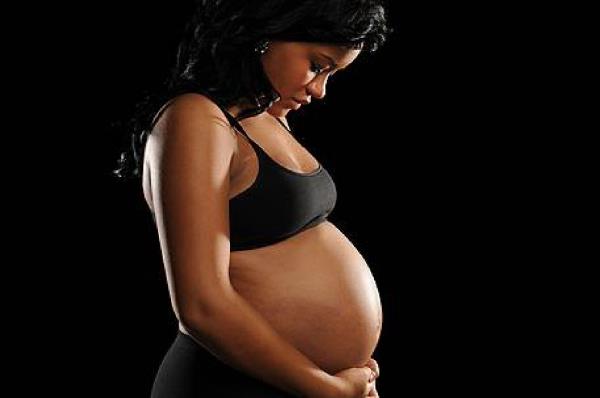Medical Expert Explains The Numerous Health Challenges That Can Develop During Pregnancy And The Best Way To Treat Them

Pregnancy comes with different health problems and one of the ways to detect these health conditions on time is through regular pre-natal visits.
According to a gynecologist in Lagos, Dr. Ifeoma Onyebuchi, regular prenatal visits help doctors identify potential health problems early and take steps to manage them so as to protect the health of the mother and the developing fetus.
The expert said that being aware of the symptoms of these conditions and getting regular prenatal care can prevent health problems and help pregnant women get treatment as early as possible.
Some of the problems that can develop during pregnancy include:
Iron Deficiency Anemia:
Anemia occurs when your red blood cell count (hemoglobin or hematocrit) is low. Iron deficiency anemia is the most common type of anemia. Iron is part of the hemoglobin that allows blood to carry oxygen.
Dr. Onyebuchi noted that pregnant women need more iron than normal for the increased amount of blood in their body and for their developing child.
According to her, symptoms of iron deficiency include feeling tired or weak, looking pale, feeling faint, or experiencing shortness of breath. Iron and folic acid supplements are recommended to such women.
Gestational Diabetes:
Gestational diabetes occurs when blood sugar levels are found to be too high during pregnancy. The exact number of women affected by gestational diabetes is unknown because of different diagnostic criteria and risk profiles.
Most often, the condition is discovered using a two-step procedure: screening with the glucose challenge screening test around 24 to 28 weeks of pregnancy, followed by a diagnostic test called the oral glucose tolerance test.
Gestational diabetes increases the risk of a baby that is too large and preeclampsia, a condition marked by a sudden increase in a pregnant woman’s blood pressure along with the presence of protein in the urine after the 20th week of pregnancy.
Treatments include controlling blood sugar levels through a healthy diet and exercise and through medication if blood sugar values remain high.
Depression and Anxiety:
Many people are familiar with the phrase ‘postpartum depression’ which means depression that occurs after the birth of a baby. But we now know that it’s not just during the postpartum period, and it’s not just depression. Dr Onyebuchi said:
“Women experience depression and anxiety, as well as other mental health conditions during pregnancy and after the baby is born. These conditions can have significant effects on the health of the mother and her child.”
She added that there is no single cause of depression or anxiety during and after pregnancy, but hormonal changes, stress, family history, and changes in brain chemistry or structure may all play a role. Women who have complications during pregnancy are at higher risk for postpartum depression than are women who do not have complications.
Depression can harm the developing fetus if pregnant women don’t take care of themselves during pregnancy, including attending regular prenatal visits and avoiding alcohol and tobacco smoking.
One of the ways depression and anxiety can be handled is talking to a health care provider if they feel overwhelmed, sad, or anxious. Even though they are serious conditions, depression and anxiety are treatable.
Fetal Problems:
Possible problems in the fetus include decreased movement after 28 weeks of pregnancy and being measured as smaller than normal. These pregnancies often require closer follow-up including more testing such as ultrasound exams, non-stress testing and biophysical profiles as well as possible early delivery.
Infections:
Infections, including some sexually transmitted infections (STIs) may occur during pregnancy and/or delivery and may lead to complications for the pregnant woman, the pregnancy, and the baby after delivery.
Hyperemesis Gravidarum:
Some women experience severe, persistent nausea and vomiting during pregnancy beyond the typical morning sickness. Medication may be prescribed to help with the nausea.
Women with hyperemesis gravidarum may need hospitalization to get the fluids and nutrients they need through a tube in their veins. Often, the condition lessens by the 20th week of pregnancy.
Miscarriage:
Pregnancy loss from natural causes before the 20th week is considered a miscarriage. It is hard to estimate exactly how many pregnancies end in miscarriage because they may occur before a woman even knows she is pregnant.
The most common cause of first trimester miscarriage is chromosomal problems. Symptoms can include cramping or bleeding. Spotting early in pregnancy is common and does not mean that a miscarriage will occur.
Placenta Previa:
This condition occurs when the placenta covers part of the opening of the cervix inside the uterus. It can cause painless bleeding during the second and third trimesters. The pregnant woman’s doctor may recommend bed rest. Hospitalization may be required if bleeding is heavy or if it continues. Placental problems may affect how the baby is delivered.
Placental Abruption:
In some women, the placenta separates from the inner uterine wall. This separation, or abruption, can be mild, moderate, or severe. If severe, the fetus cannot get the oxygen and nutrients needed to survive.
Placental abruption can cause bleeding, cramping, or uterine tenderness. Treatment depends on the severity of the abruption and how far along the pregnancy is. Severe cases may require early delivery.
SEE ALSO: Pre-eclampsia Risk During Pregnancy Lowered With High-Fibre Diet- Study
Preeclampsia:
Preeclampsia is a quick or sudden onset of high blood pressure after the 20th week of pregnancy. This condition causes high blood pressure, swelling of the hands and face, abdominal pain, blurred vision, dizziness, and headaches.
In some cases, seizures can occur—this is called eclampsia. The only definite cure for preeclampsia and eclampsia is to deliver the baby. If this would result in a preterm birth, then the maternal and fetal risks and benefits of delivery need to be balanced with the risks associated with the infant being born prematurely.
Preterm labour:
Infants do best if they are born after 39 or 40 weeks of pregnancy which is considered full term. The fetus’s lungs, liver, and brain go through a crucial period of growth between 37 weeks and 39 weeks of pregnancy.
Going into labor before 37 weeks of pregnancy is a major risk factor for complications for the infant and for future preterm births for the mother.
Sometimes, when there is a health risk to the mother or baby, planned deliveries before 39 weeks are necessary. However, in a healthy pregnancy, it’s best to wait until at least 39 weeks.
Source: Daily Sun


